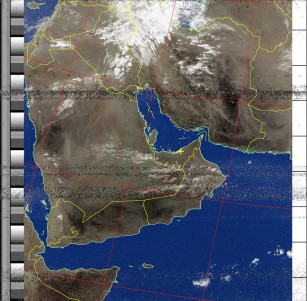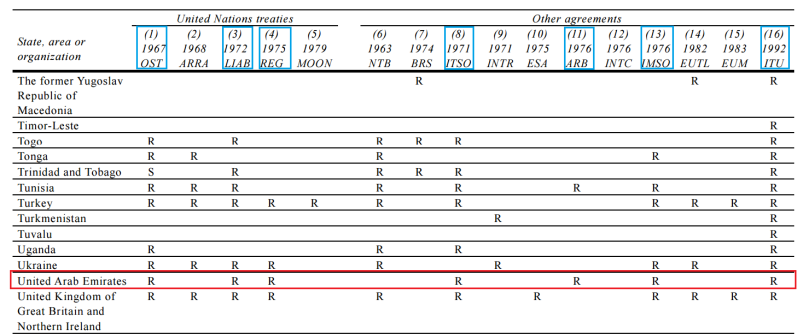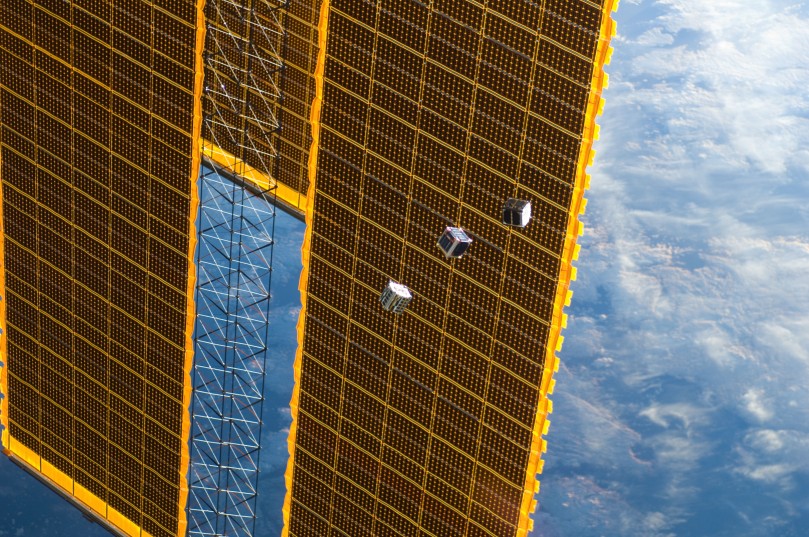The team has been practicing receiving satellite signals from NOAA weather satellites using several softwares: Gpredict – for satellite pass prediction and tracking, SDR Console v2.3 – for receiving and recording satellite signal. The ground segment setup is a simple 5-elements 2m Yagi antenna mounted on top of a tripod, connected to a FUNCubeDongle Pro SDR radio and to a laptop.
The team consists of 4 people working together to track the satellite azimuth and elevation angle so that one would aim the antenna toward the satellite as it moves across the sky. Due to Doppler Effect, RX frequency is corrected in real time in order to have less noise. The audio signal was being recorded using SDR software. The recorded signal is then converted to images using WXtoImg.

An image from NOAA 19 passing over Masdar Institute



